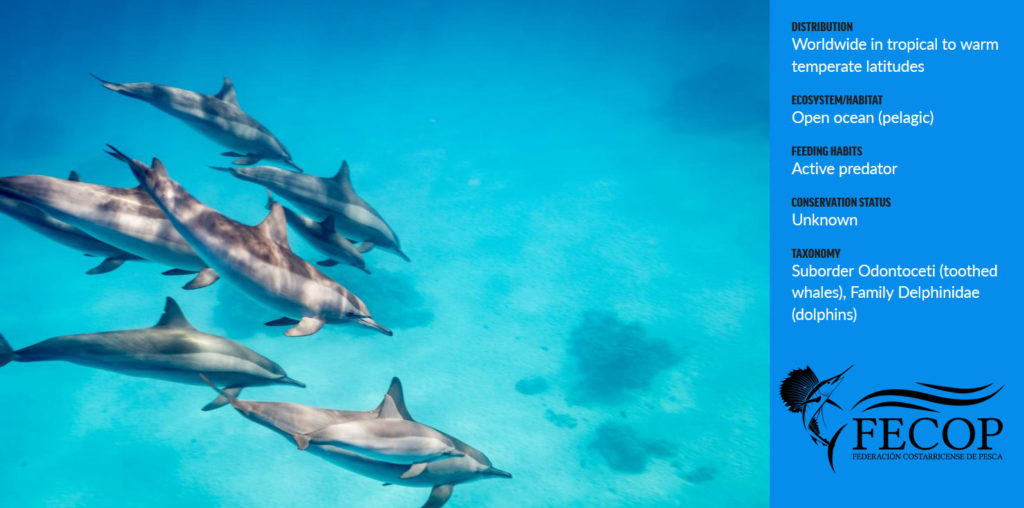FECOP Species: Costa Rica Spinner Dolphins
The spinner dolphin gets its name from its habit of leaping from the water and spinning rapidly before landing with a splash. Sometimes, individuals will leap repeatedly, as many as ten times in a row. This species lives in the open ocean and often associates with other species of dolphins and with schools of tuna. Spinner dolphins are relatively small for the dolphin family, reaching lengths of approximately seven feet (2 m) and weights of only about 170 pounds (77 kg). Spinner dophin and yellowfin tuna often swim together to hunt and discourage larger predators.
This species feeds on schooling, mesopelagic fishes and squids in the open ocean. Like their prey, spinner dolphins form large groups – typically composed of hundreds or even thousands of individuals (common offshore in Costa Rica’s Southern Osa Peninsula Region) – for hunting and socializing. Spinner dolphins are known for being quite playful and put on impressive aerial displays, breaching and spinning regularly. Mating also occurs in groups, with several males and several females mating simultaneously. Females only reproduce every three years or so.

As the spinner dolphin is a wide ranging, open ocean species, its conservation status is not well known. It is, however, at the center of a major conservation controversy. In the 1980s, fisheries that targeted the yellowfin tuna were responsible for accidentally catching and killing spinner and spotted dolphins, sparking the famous and successful dolphin-safe tuna campaign. The tendency of adult yellowfin tuna in the Pacific Ocean to school with similarly sized adult dolphins leads to the unfortunate habit of fishermen exploiting this symbiotic relationship and setting their nets around dolphin pods with the hope of catching the nearby tuna. That activity is now illegal in most places around the world, but scientists believe that several million spinner and spotted dolphins have been killed in tuna nets. This species now has legal protection throughout much of its range and is the focus of several international conservation efforts. However, continued study is needed to determine the direction of population trends and the conservation status of this species.

Related Articles
Explaining the Costa Rican Tuna Decree
Fisherman Report more Dolphins, Tuna Along the Pacific Coast
Costa Rica’s Tuna Decree is Saving it’s Dolphins and Billfish



















